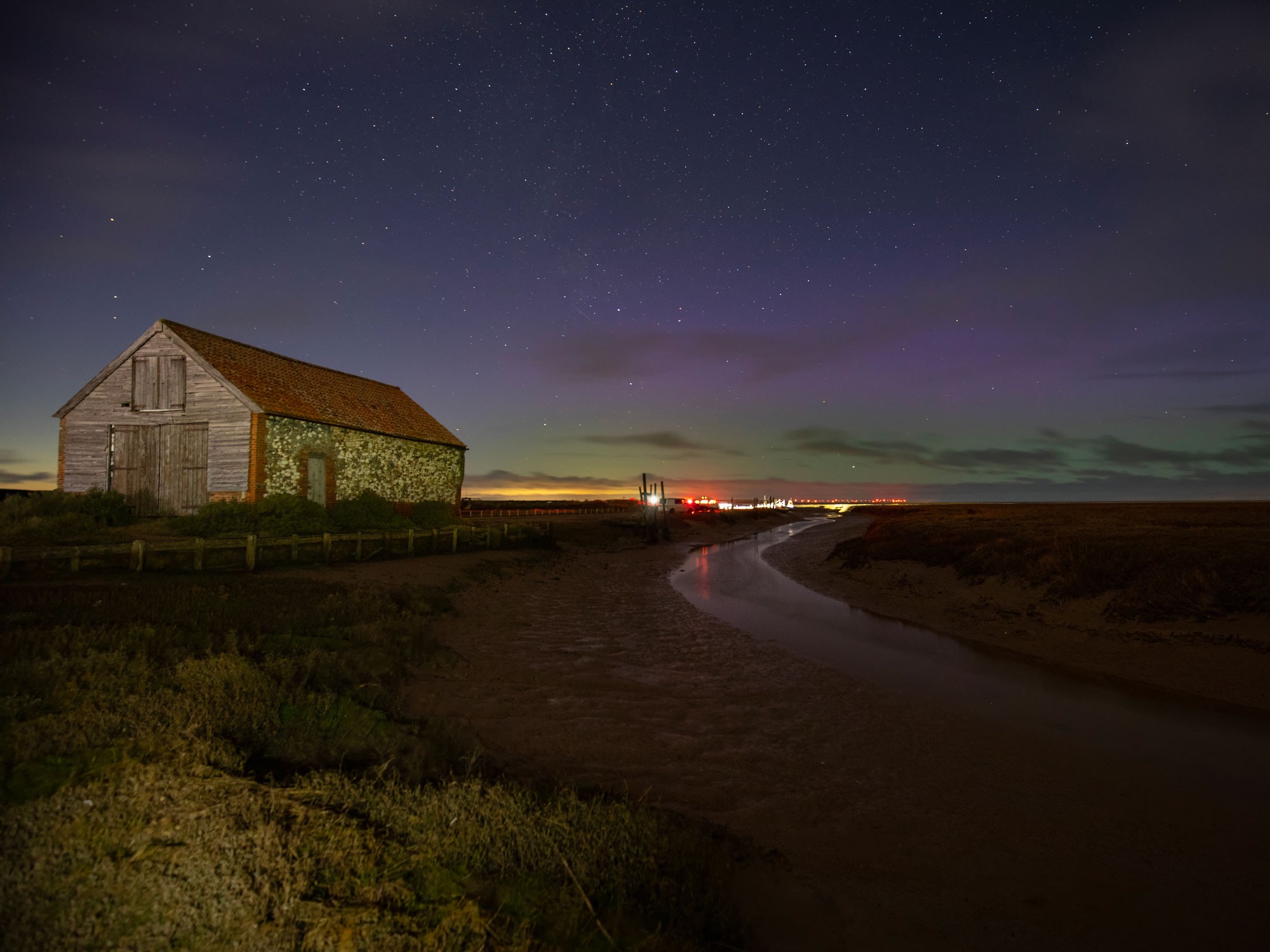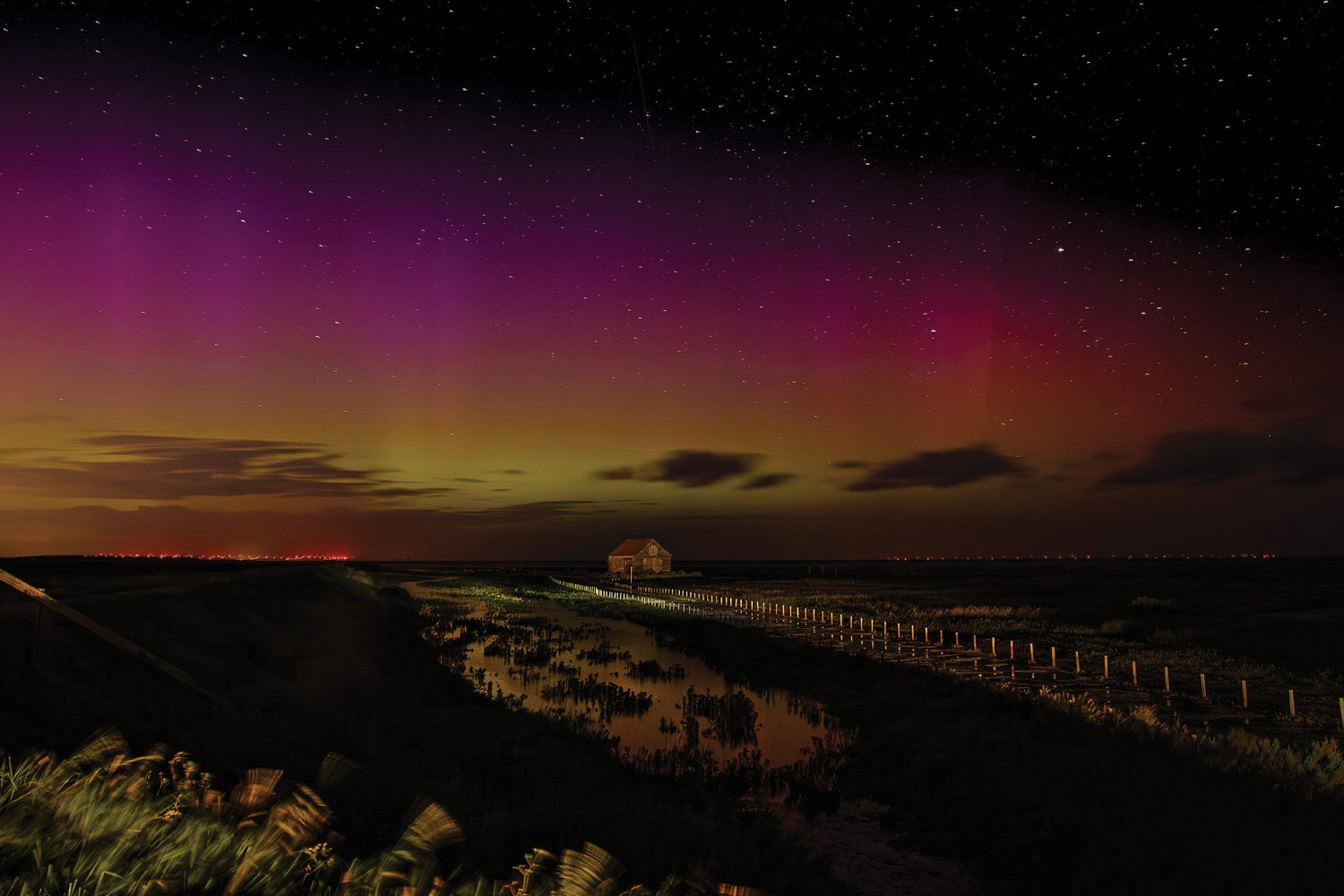
The dazzling Northern Lights of Norfolk
Blessed with uncommonly dark skies and low light pollution, Norfolk has become one of the best places in the UK to spot the aurora borealis
Most commonly known as the Northern Lights, the aurora borealis is one of the Earth’s greatest, and most beautiful natural phenomena. The spectacle of brilliant lights appear as curtains, rays, spirals or fleeting flickers in the night sky, offering lucky viewers a glorious glimpse of magic.
Of course, thanks to science we know that the aurora borealis is not magic at all, but a result of ‘space weather’ and its reaction with our atmosphere. “Northern Lights ultimately begin with solar storms on the surface of the sun,” explains Dan Self, Chairman of the Breckland Astronomical Society. “During a solar storm, the sun is extremely active and spits out particles towards Earth. It takes just two to three days for these electrons and protons to reach our atmosphere, where they interact with the Earth’s magnetic fields. They spiral towards our polar regions, where the magnetic fields are strongest.”
It’s the collision between these particles and gases in the Earth’s upper atmosphere that causes the dazzling visual displays we see in the night sky. The colour of the glow depends on which gas is being excited by the particles and how much energy is being exchanged. “If it’s a strong aurora it usually ends up high in the atmosphere, causing a red glow,” Dan continues. “This is caused by oxygen, though not the O2 compound that we need to breathe.
At a distance of over 100 km high, which is considered the space line, it’s just single oxygen atoms. The green that you see is also from oxygen, but atmospheric pressure causes it to emit different colours at different altitudes. ”You can also see pink, purple and blue at times, which are caused by nitrogen atoms. To the naked eye, however, the complete array of colours isn’t always visible – especially in locations where the aurora isn’t as strong to begin with. That’s why so many enthusiasts head to northern destinations such as Alaska, Canada, Greenland, northern Scandinavia and Iceland which have high latitudes and dark skies.
To really bring out the colours I recommend using a camera with a detachable lens and long exposure...

Fortunately, as long as you have a camera phone (or even better, an SLR digital camera) should the Northern Lights bless Norfolk again, you’ll be able to capture the marvel. “To really bring out the colours I recommend using a camera with a detachable lens and long exposure,” says Dan. “I’d personally opt for a 10 second exposure with crisp focus. If you go up to a minute you tend to get star trails, which are stunning but will ruin your shot of the aurora.”
You have to witness the impressive display to begin with to get the money shot, but opportunities are far fewer in the UK than other countries. With lower light pollution and incredible dark skies in parts, Norfolk is blessed to count itself amongst the few locations where the aurora is visible.
Five areas within Norfolk are ideal for capturing a glimpse of the aurora borealis, earning them ‘Dark Sky Discovery Site’ status. Wiveton Downs car park and Kelling Heath Holiday Park can be found within North Norfolk’s Area of Outstanding Natural Beauty, providing easy access to stargazers and aurora hunters wanting to enjoy fantastic views of the sky. Both coastal locations, together with sites in Barrow Common near Brancaster and RSPB Titchwell Marsh Nature Reserve in West Norfolk, also offer the unique chance to spot the milky way with the naked eye.
The other site can be found inland at Breckland Astronomical Society near Great Ellingham. “We’re extremely honoured to have been awarded this accolade,” says Dan. “The observatory offers tremendous opportunities for stargazing and aurora watching, thanks to the north facing view, and we take great pride in providing access to dark skies and preserving dark zones.”
As a protected site the area is better safeguarded against possible light pollution, but it’s still an issue, according to Dan. “Artificial light can have a huge impact on stargazing and our ability to see the aurora,” he says. “It’s also extremely troublesome for animals and insects, and it affects our circadian rhythm. It’s less of a problem here and at the other Dark Sky Discovery sites, but it’s an issue that needs bearing in mind.”
To help enthusiasts and budding astronomers discover the wonders of the night sky, Dan and the other volunteers at Breckland Astronomical Society run two free events a month at their observatory. A talk night on the second Friday of every month and an open observatory night the last Friday.
“Whatever your experience, we’d love to have you along to our stargazing events,” says Dan. “For those of you hoping to catch the next aurora, I recommend the Glendale app, which notifies you of upcoming sightings. There’s also a Facebook group called AUK - Aurora UK co-run by the brilliant James Rowley-Hill from Norfolk, which offers the best advice on chasing the Northern Lights.”
There can be no doubt that the dazzling aurora will return to the dark skies of Norfolk. When they do, we will be ready to enjoy their magical glow once more.
